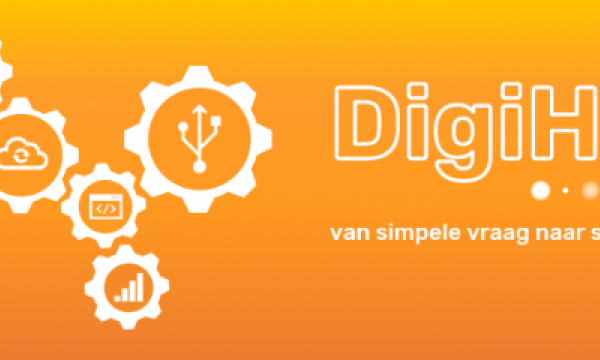Press release European research project improves recipes for successful demonstrations

What are the dos and don'ts in organizing demos for farmers? How to make a program rich, accessible and attractive? What tools do you promote smooth interaction among participants? And how do you discuss more sensitive themes?
Thanks to 3 European Farm Demo projects (which work intensively together) there is now a training kit and a handy roadmap with tips and good examples, compiled on the basis of scientific observations and analyses of nearly 60 European cases.
In order to further disseminate good practice, Europe is creating a living network between demo farmers. The databank already contains 1,400 farms and organisations. About 40 of them are located in Flanders.
Fleur Marchand (ILVO researcher and partner in Farm Demo): "The Flemish advisors and consultants do well in comparison with their foreign counterparts, but improvement is possible. We see for example that they often demonstrate while using one-way traffic, while interactions between farmers stimulate learning best. Thanks to Farm Demo, we have been able to identify some simple tricks to stimulate those interactions. "
The best way to learn is from each other. That used to be almost automatic. Farmers regularly met at the bar or after church. Now those interactions need to be facilitated, and demos are a good tool for that. They are also good for developing and testing innovations on farms, but the full potential of demos is not being exploited. There is a need for best practices, good examples and an overview of useful tools. That was the goal of AgriDemo-F2F and PLAID, 2 of the 3 Horizon2020 projects of Farm Demo.
Inventory and case study analysis. In a first phase, the project partners mapped out the agricultural holdings and organizations concerned in 30 European countries. More than 700 farms and nearly 400 organisations were queried. From there, demo events were selected to study in detail in a comparative case study analysis. Which actors participate? What roles do they take on? What techniques and tools do they use for recruitment, interaction and knowledge sharing? And was the demo a success, i.e. who learned something, what did they learn, and how was it learned?
Training Kit and Design Guide. The analyses included crystallizations of some best practices. They were translated into a Farm Demo Training Kit for demo farmers and a Farm Demo Design Guide with checklists, good examples (videos, infographics), interesting web links and tips for demo organizers. All tools are (or soon will be) available through the interactive, user-friendly web application farmdemo.eu.
Lies Debruyne (ILVO): "The most important lesson is that there is no one correct format. Do you want to teach something to farmers, do you want them to interact or do you want to create awareness? Does the audience have some background in the area, or not? Do they know each other or not? All these questions determine which format will work best and which tools you use best. In the Farm Demo Design Guide you find a handy matrix that summarizes everything."
Join the Farm Demo community! Farmers who are interested in getting started and organizing demo activities can register for free on the Farm Demo Hub. This gives them access to all the tips, future demonstrations (and related) activities in the framework of NEFERTITI. That includes 45 regional hubs of farmers, advisers, cooperatives, researchers, policymakers etc., established and brought together in 10 thematic networks. Each year, a demo campaign is organized in each hub to implement best practices from Farm Demo. Fleur Marchand (ILVO): "In addition to technical knowledge, in these campaigns the best practices of demonstrations in real life are shared among demo-farmers, and that may just be the best way to learn (from each other)."
7 DO'S FROM THE FARM DEMO DESIGN GUIDE
- Vary! Switch regularly from format and ensure sufficient variation between listening, discussing, seeing and doing. A convenient way to do this is to take into account the 4 learning types in your audience: (Tools on how to do that are found in the Design Guide)
- Auditory persons
- Visually impaired persons
- Persons who learn by reading or writing
- Kinesthetic (body-based) learners
- The start of a demo is crucial. Take care of an icebreaker at the beginning. Tips can be found in the Design Guide.
- Wake up your audience awake occasionally by building a surprise element. Examples can be found in the Design Guide.
- Keep to the rule of 3
- Limit yourself to 3 core messages.
- Repeat each key message 3 times (certainly once at the end as 'take home messages').
- Use 3 supporting messages for each key message.
- The chance to visit another farm is a major reason for farmers to attend demos. Involve the demo farm as much as possible:
- Let the guest farmer and/or guest farmer tell them about their experiences – also about what went wrong and the learning process they have been going through. This can encourage participants to share their experiences too.
- Use the demo farm as much as possible as a practical example.
- Provide sufficient time for networking. This encourages (particularly effective) learning from each other through informal knowledge transfer.
- Do you want to work around a sensitive theme (e.g. stress, financial situation)? Then you need time and patience. Only after the same group has attended several sessions will there be sufficient confidence among the participants to discuss the real taboos.
5 DON'TS FROM THE FARM DEMO DESIGN GUIDE:
- Too little food and drink provided. There’s nothing as annoying as hunger or thirst. Your participants will not have any more attention to the program but think about their dry throat or empty stomach all the time (and they will blame you). If it can, choose something that was made on the farm or with farm products.
- Do not take enough time to visit the host farm. Keep in mind that this is one of the reasons why farmers participate, so give them what they come for.
- Don’t provide access to the sanitary facilities. Because if the need is high...
- Don’t amplify the sound. After hunger and thirst are probably the most annoying thing about a demo is not understanding the Speaker in front or the guide during the tour.
- Do not designate a facilitator/moderator and time keeper. These are very important roles, but they are often forgotten. A facilitator/moderator ensures that the participants know what is going to happen, what is expected of them and encourages them to actively participate in discussions. Watching the clock at the same time is difficult. So give someone else the command to keep the program on track.
Farm Demo is the result of a strong collaboration between 3 Horizon2020 projects. ILVO draws the AGRIDEMO-F2F project at European level and works in Flanders together with the innovation Support (in PLAID), Inagro and the Hooibeekhoeve (in NEFERTITI).



